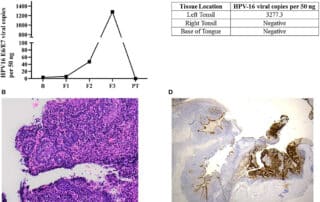ASCO 2020: New optimized precision radiotherapy can reduce swallowing difficulties for head and neck cancer patients
Source: www.icr.ac.uk Author: staff A new optimized intensity-modulated radiation therapy (IMRT) pioneered at The Royal Marsden NHS Foundation Trust and The Institute of Cancer Research, London, has been shown to spare head and neck cancer patients’ adverse life-long side effects post treatment. The initial results from the Dysphagia-Aspiration Related Structures (DARS) trial, funded by Cancer Research UK and the National Institute for Health Research, were presented at the American Society for Clinical Oncology (ASCO) virtual conference this week. The randomized study found patients with head and neck cancer experienced less adverse side effects with the new precision radiotherapy technique optimized to reduce the risk of swallowing difficulties, known as dysphagia. Half of newly diagnosed patients with oropharyngeal and hypopharyngeal cancers (tumors of the throat) recruited to the trial received standard IMRT radiotherapy and the other half received IMRT optimized to reduce the radiation dose to the structures related to swallowing and breathing. The trial recruited 112 patients across 23 UK cancer centres. Difficulties eating and drinking Patients with head and neck cancer have a 90 percent survival rate but can be left with life changing side effects including swallowing problems, making it difficult to eat and drink. The self-reported measure of swallowing ability as perceived by patients themselves was better in the optimised IMRT group. Twelve months after treatment, 40 percent of patients given the optimized form of precision radiotherapy reported their swallowing was as good as ever in comparison to just 15 percent on the standard treatment. The DARS [...]

